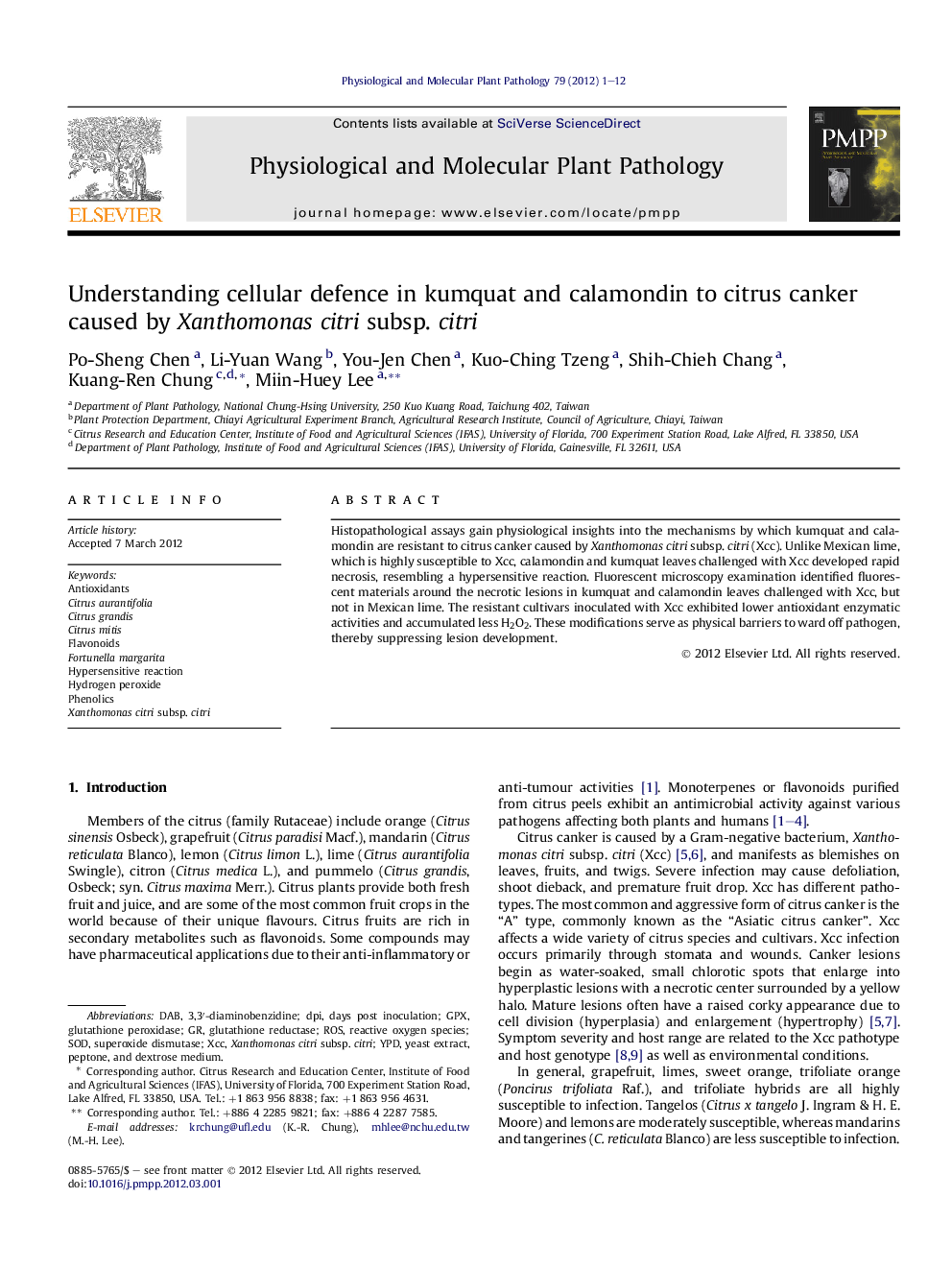| Article ID | Journal | Published Year | Pages | File Type |
|---|---|---|---|---|
| 2836441 | Physiological and Molecular Plant Pathology | 2012 | 12 Pages |
Histopathological assays gain physiological insights into the mechanisms by which kumquat and calamondin are resistant to citrus canker caused by Xanthomonas citri subsp. citri (Xcc). Unlike Mexican lime, which is highly susceptible to Xcc, calamondin and kumquat leaves challenged with Xcc developed rapid necrosis, resembling a hypersensitive reaction. Fluorescent microscopy examination identified fluorescent materials around the necrotic lesions in kumquat and calamondin leaves challenged with Xcc, but not in Mexican lime. The resistant cultivars inoculated with Xcc exhibited lower antioxidant enzymatic activities and accumulated less H2O2. These modifications serve as physical barriers to ward off pathogen, thereby suppressing lesion development.
► Xanthomonas citri induces HR-like lesions in kumquat and calamondin. ► The rapid cell death plays an important role in defence reactions in kumquat. ► The antimicrobial compounds play a role in canker resistance. ► Physical barriers ward off bacterial invasion and suppress lesion development.
